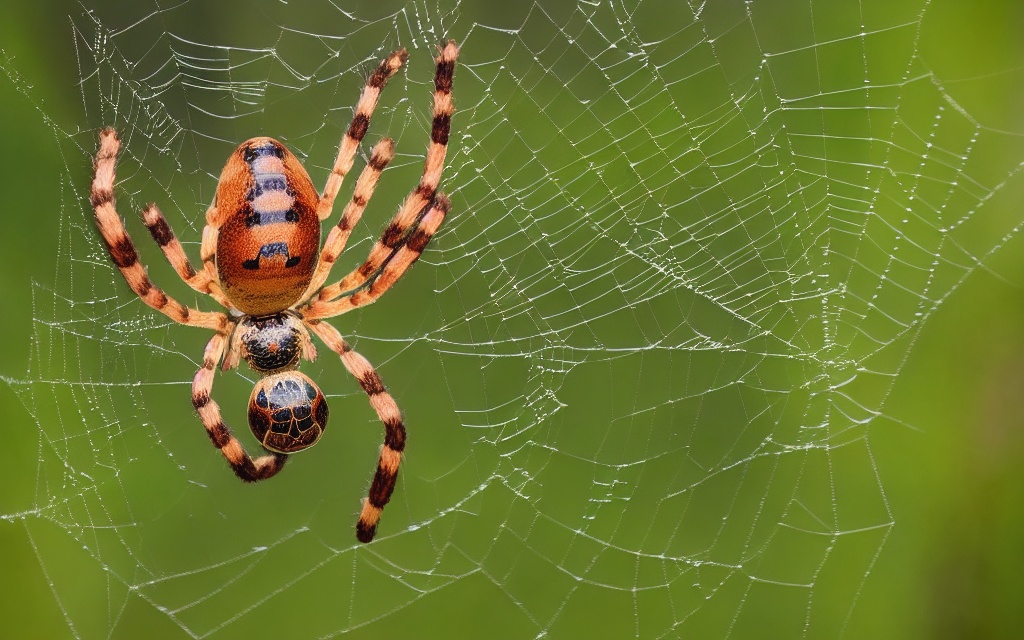Why Do Rats Squeeze? Decoding Happy and Sad Squeaks
Curious about the chatter of your pet rat or the squeaks you hear scampering in the attic at night? Rats have a vocal repertoire that’s as sophisticated as it is intriguing. They squeak for a variety of reasons, and it’s not just about emotions like happiness or sadness.
You’re about to dive into the world of rat communication where every squeak tells a story. Whether it’s a signal of joy, a cry for help, or just casual rat banter, understanding these sounds can deepen your bond with a pet rat or give you insight into the behavior of these often misunderstood creatures. Let’s explore the symphony of squeaks and what they really mean.
The Vocal Repertoire of Rats
Rats have a complex system of vocalizations that serve as a critical communication mechanism within their species. Beyond the human-audible squeaks, these rodents produce ultrasonic sounds that cater to specific situations. When rats squeak, it’s essential to consider the context to understand their emotional state.
Research shows that high-pitched chirps are commonly associated with positive emotions. These sounds often occur during play or when rats experience gentle handling from their owners. On the other hand, low-pitched noise could indicate discomfort or annoyance.
To decipher your rat’s vocal messages, observe their behavior along with the sounds they make. Content rats might softly grind their teeth, a behavior known as bruxing, which typically accompanies softer chirps. This multi-level communication underscores the richness of their vocal expressions.
Here are some typical scenarios where you might hear these vocal cues:
- Grooming sessions: Soft chattering can point to a relaxed and happy state.
- Exploratory behavior: Squeaks during exploration may signal curiosity or excitement.
- Social interactions: Rats communicate their hierarchy and social standing within their group through vocalizations.
Understanding these varied vocalizations is not merely academic; it equips you to better care for your pet rat. You’ll be more attuned to their needs and well-being, fostering a deeper connection between you and your furry friend.
Rat owners often report recognizing individual squeaks over time, indicating specific needs or desires of their pet. Such insights enable a tailored approach to pet care, ensuring a harmonious living situation for both rat and owner.
Equipped with this knowledge, you’re on your way to becoming a more responsive and sensitive rat companion. Whether it’s through a mischievous squeal during playtime or a quiet chirp while cuddling, your rat is always communicating. It’s up to you to listen and interpret these vocal clues, enhancing the bond you share with your pet.
Understanding Rat Communication
When you hear your pet rat squeak, it’s natural to wonder about their emotional state. Rats have a sophisticated system of vocalizations that conveys a wide range of emotions and intentions. It’s important to recognize that squeaks are not just random noises; they are a critical part of how rats communicate with each other and with you.
One key to interpreting rat squeaks is to consider the context in which they occur. If your rat squeaks while being gently groomed by a cage mate, it’s likely expressing contentment. On the other hand, a sharp squeak during a tense moment could indicate fear or discomfort. Observing body language alongside these vocalizations provides a clearer picture of your rat’s emotions.
Beyond mere squeaks, rats also produce ultrasonic sounds that are above the range of human hearing. These high-frequency sounds are used for various reasons including signaling happiness during play or establishing social hierarchies. You won’t be able to hear these ultrasonic communications, but specialized equipment can detect them, revealing another layer of your rat’s emotional life.
It’s also worth noting the difference in sound patterns. For instance:
- Long, chirping sounds often mean your rat is enjoying itself, possibly during exploration or play.
- A series of rapid, short squeaks might signal annoyance or a mild dispute with a cage mate.
- Soft chattering can be a sign of relaxation or a request for social interaction.
Understanding these sounds will help you respond to your rat’s needs and strengthen your bond. For those interested in diving deeper into rat communication, investing in a bat detector or similar ultrasonic listening device can provide insights into those higher frequency calls.
Remember, each rat has its own personality and may use vocal cues differently. Over time, you’ll learn to interpret the unique communications of your pet rat, allowing for a more enriched and responsive relationship.
Decoding the Squeaks: Emotions and Meanings
When you hear your pet rat squeak, it’s natural to wonder about the emotions behind the sound. Understanding rat squeaks involves tuning in to the nuances of their vocalizations. Rats express joy, fear, discomfort, and a range of emotions with varying squeak patterns.
Happy chirps often come in long, melodious sequences. These are usually heard during pleasant activities, like gentle grooming or when your rat is exploring an interesting new toy. The sounds are akin to purring in cats and signify your rat is feeling content and secure in its environment.
On the other side, a sharp, short squeak can be an alarm bell. Rats emit these when startled or experiencing discomfort. Be mindful of the circumstances surrounding this sound to appropriately gauge the severity of the situation. A sudden loud noise in the room or a poke by a curious child could trigger such a response.
When rats feel agitated or stressed, they may produce a rapid series of high-pitched squeaks. This is their way of vocalizing displeasure or warning. If this occurs during handling, they might need a break to calm down.
If you’re hoping to delve even deeper into your rat’s vocal language, consider investing in a bat detector to capture the ultrasonic squeaks beyond human hearing. These high-frequency calls can provide more insight into your rat’s well-being.
Listening closely and observing body language in correlation with the squeaks can significantly enhance your bond with your rat. You’ll start to decipher what triggers certain vocalizations. Maybe a new type of food results in excited chirps or a tense stance aligns with distressed squeaks. Over time, you’ll learn to interpret these cues, nurturing a deeper connection and understanding of your furry friend’s emotional world.
Remember, each rat is an individual, just as humans are. Their vocal expressions can vary widely. Keeping that individuality in mind, respect their unique communication methods and emotional expressions. These acoustic signals are key to maintaining a happy and healthy relationship with your pet rat.
Happy Squeaks: Exploring Joyful Rat Sounds
Imagine you’re watching your pet rat during a play session. If it seems particularly animated and full of pep, you’re likely to hear a series of high-pitched chirps. Rats often express joy and contentment through these happy squeaks, especially when engaging in activities like play-fighting or exploring new environments. These sounds are a rat’s way of saying, “I’m having a great time!”
When grooming each other or simply relaxing and cuddling, rats also emit longer, softer chirps. This acoustic display is much like the purring of a cat—it signals comfort and pleasure. You’ve tapped into the auditory cues that show you’re doing something right in their care routine.
For a more in-depth listen, a bat detector can make ultrasonic rat noises audible. With this device, you’ll catch the nuance in each chirp and squeak, further tuning into your rat’s happiness. It’s like being given a key to unlock a secret world of ultrasonic chatter, providing an edge to your pet-keeping experience.
Keep an eye—or ear, rather—for rapid-fire bursts of short, high-pitched squeaks during rat playtime. It’s easy to mistake these bursts for signs of distress, but they’re usually just the rodent equivalent of laughter, triggered by the joy of rough and tumble play.
Understanding these vocal cues is crucial for a harmonious pet-owner relationship. As you become more attuned to your rat’s sounds, you’ll find yourself better equipped to cater to their well-being. When your rat is squeaking happily and bounding around, you’ll know you’ve created a space where they feel secure and stimulated. Observing and responding to these joyous sounds enriches the bond you share with your furry companion.
Sad Squeaks: Unraveling the Sounds of Distress
When your pet rat emits a series of high-pitched squeaks, it’s essential to pay attention. These vocalizations often indicate they’re experiencing some form of distress. Unlike the content chirps associated with happiness, these squeaks serve as an alarm bell, signaling that your rat needs immediate attention.
In the world of rat communication, certain sounds are clear indicators of fear or pain. If you hear sharp, repetitive squeaking, your rat might be feeling threatened or in discomfort. Look for additional body language cues, such as puffing up fur or sudden, jerky movements, to confirm their anxious state.
To understand these distress calls better, here’s what to watch for:
- Short, loud squeaks
- Frequent squeaking with no apparent trigger
- Agitated body language paired with vocalizations
If this behavior persists, it’s important to check your rat’s environment for any possible stress factors. This could be anything from a new pet in the household to a change in cage placement that has left your rat feeling vulnerable.
Remember, consistent observation and prompt reaction to these unhappy squeaks can prevent further stress for your rat. Addressing any environmental or health concerns quickly can help return your pet to its usual, more contented state.
To capture the full extent of these vocal distress signals, especially those beyond human hearing range, consider using a bat detector or a specialized app designed to pick up ultrasonic sounds. This way, you’ll have a better chance of hearing all the subtle nuances of your rat’s communication and can respond more effectively to their needs.
By tuning in to the quieter, yet urgent squeaks of unease, you’ll be better positioned to care for your rat’s emotional wellbeing. It’s all about providing a safe and comforting environment, so that distress calls become far less common.
Conclusion
Unlocking the mystery of rat squeaks is a journey into their emotional world. By tuning into their audible and ultrasonic sounds, you’re better equipped to understand and respond to their feelings. Whether it’s the contented chirps during a grooming session or the sharp squeals of distress, your attentiveness to these cues enhances your bond with your pet rat. Remember that each rat is an individual with a distinct personality and communication style. With patience and observation, you’ll learn to interpret these vocal nuances, ensuring a happier and healthier relationship with your furry friend. Keep listening, keep observing, and cherish the complex emotional tapestry of your rat’s squeaks.
- Why Install a Privacy Fence? Key Benefits for Security, Value & Peace of Mind - October 25, 2025
- Where Can I Advertise My Backyard Business? Best Online & Local Advertising Tips - October 24, 2025
- When Is the Best Season to Build a Pergola? Ultimate Guide to Perfect Timing - October 24, 2025




